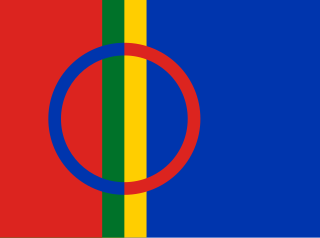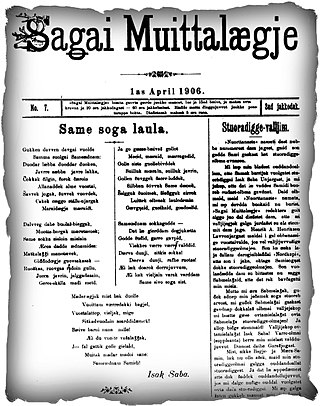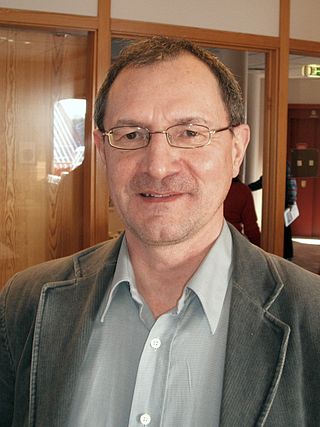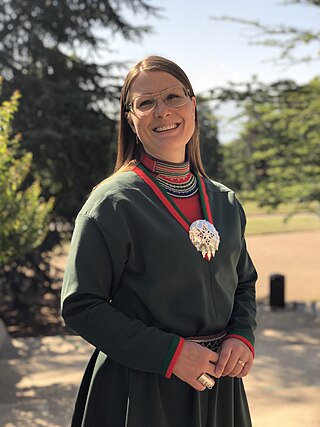
The Sámi are the traditionally Sámi-speaking Indigenous peoples inhabiting the region of Sápmi, which today encompasses large northern parts of Norway, Sweden, Finland, and of the Kola Peninsula in Russia. The region of Sápmi was formerly known as Lapland, and the Sámi have historically been known in English as Lapps or Laplanders, but these terms are regarded as offensive by the Sámi, who prefer their own endonym, e.g. Northern Sámi Sápmi. Their traditional languages are the Sámi languages, which are classified as a branch of the Uralic language family.

Sápmi is the cultural region traditionally inhabited by the Sámi people. Sápmi includes the northern parts of Fennoscandia, also known as the "Cap of the North".

Kautokeino is a municipality in Finnmark county, Norway. The administrative centre of the municipality is the village of Guovdageaidnu/Kautokeino. Other villages include Láhpoluoppal and Máze.

(Norwegian) or Kárášjohka is a municipality in Finnmark county, Norway. The administrative centre of the municipality is the village of Karasjok. Other villages include Dorvonjárga, Šuoššjávri, and Váljohka.

In traditional Sámi music songs and joiks are important musical expressions of the Sámi people and Sámi languages. The Sámi also use a variety of musical instruments, some unique to the Sámi, some traditional Scandinavian, and some modern introductions.
Ságat is a Sámi newspaper written in Norwegian that is published in Leavdnja in Porsanger Municipality, Finnmark county, Norway.
Jiella was a multi-generational Saami pop group formed in Karigasniemi, Utsjoki, Finland in 1999, led by singer-songwriter and musician Niilo Rasmus. The band was at the forefront of the modernization of the traditional luohti of the Saami living along the Teno, when they started to incorporate Western musical elements such as pop and disco into the traditional luohti. Their entire repertoire is in Northern Saami and is still an integral part of the play lists on Saami radio stations today.

Saǥai Muittalægje was an early Sámi newspaper published twice a month from July 1904 to September 1911. Although only 33 issues were published, Saǥai Muittalægje played an important role in building Sámi identity and supporting opposition to Norwegianization policies. It is considered the first Sámi political newspaper.
Min Áigi was a twice-weekly Northern Sámi language newspaper based in Kárášjohka, Norway. In 2008, Min Áigi ceased publication to merge with the rival paper Áššu to form Ávvir.

The Sámi Parliament of Norway is the representative body for people of Sámi heritage in Norway. It acts as an institution of cultural autonomy for the Sami people of Norway.
The 2005 Sámi parliamentary election was held in Norway on 12 September 2005. Voters elected 43 members for the Sámi Parliament of Norway.
Sámi politics refers to politics that concern the Sámi ethnic group in Norway, Sweden, Finland and Russia. In a more narrow sense, it has come to indicate the government of Sámi affairs by Sámi political institutions. This article deals with Sámi political structures, with an emphasis on the contemporary institutions.

Synnøve Persen is a Norwegian Sámi artist, author, and activist who has played an influential role in bringing Sámi identity to contemporary art. She has been twice nominated for the Nordic Council Literature Prize for the Sami language area for her poetry.

Enok Mikael Svonni (born 3 September 1950) is a Swedish Sámi linguist, professor, and translator.
Kathrine Johnsen was a Norwegian Sámi teacher who worked for the public broadcasting service NRK Sápmi. She is a pivotal figure in the promotion and support of Sámi languages and culture in the post-World War II period and has been referred to as "the Mother of the Sámi Radio".
Sámi Áigi was a Northern Sámi-language weekly newspaper established in 1978, providing an alternative to the Norwegian-language Sámi publication Ságat. Sámi Áigi played a prominent role in building and empowering Sámi identity during the Alta controversy and throughout the 1980s.
Sameradion is the Sámi languages radio department of Swedish public service broadcaster Sveriges Radio (SR). Sameradion provides news, current affairs, cultural, sports, entertainment, and children’s programming for Sámi across Sweden.
The Máze Group was an art collective founded in 1978 in Máze, Norway, by the Sámi Dáidujoavku, which sought to define and carve out a space for Sámi identity and culture as part of contemporary art.

Åsa Larsson Blind is a Swedish-Sámi politician who as of March 2021 serves as vice president of the Saami Council.

Sara Marielle Gaup Beaska is a Sámi musician, singer, and yoiker originally from Kautokeino Municipality. She performs both traditional yoiks and modern yoiks.










